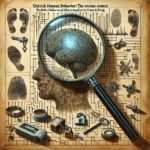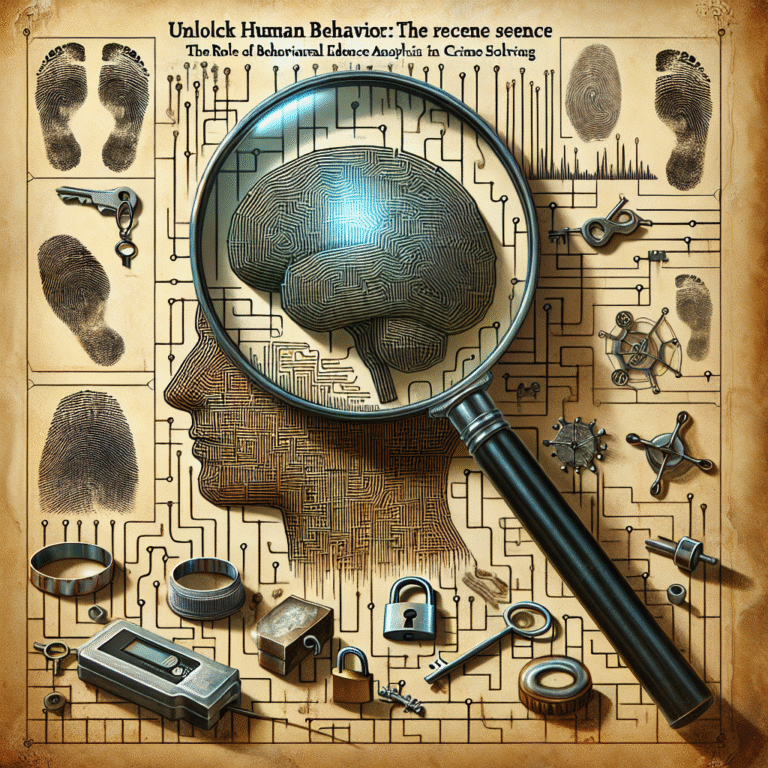
Introduction
Imagine a world where criminal cases are cracked wide open, not through traditional detective work but by delving deep into the minds of individuals—victims, witnesses, and suspects alike. Welcome to the fascinating realm of behavioral analysis, a field that is revolutionizing the way we understand human behavior and solve mysteries. In this article, "Cracking the Code: The Essential Role of Behavioral Analysis in Solving Mysteries," we will explore how psychological insights and scientific techniques combine to unravel complex cases, making it an indispensable tool in the modern investigative toolkit.
Understanding Behavioral Analysis
What is Behavioral Analysis?
Behavioral analysis is a multidisciplinary approach employed to assess human actions and traits. It springs from psychological theories and merges them with specifics of criminal justice, sociological insights, and even neuroscience. This methodology is instrumental in predicting potential actions, understanding motives, and crafting profiles that aid in investigations.
The Foundations of Behavioral Analysis
- Psychology: Understanding human emotions, motivations, and thought processes.
- Sociology: Recognizing societal influences and norms that affect behavior.
- Forensics: Bridging science with inquiry, focusing on analyzing evidence and criminal behavior.
Why Behavioral Analysis Matters
The evolution of crime-solving techniques necessitates a more nuanced approach. Conventional methods often fall short in cases where motives are unclear, or the perpetrator remains elusive. Herein lies the relevance of our theme: "Cracking the Code: The Role of Behavioral Analysis in Solving Mysteries" is not merely a catchy phrase; it symbolizes a crucial shift toward incorporating psychological insights in criminal investigations.
The Process of Behavioral Analysis
Behavioral analysis consists of a series of strategic steps designed to enhance the clarity of decision-making processes.
1. Data Collection
- Interviews: Engaging victims, witnesses, and suspects to gather firsthand accounts.
- Crime Scene Examination: Collecting physical evidence and noting behavioral clues.
2. Behavioral Profiling
Profilers create a psychological portrait of suspects based on collected data, including behavioral patterns, personal history, and emotional triggers.
3. Inferences and Predictions
Utilizing psychological theories and statistical models, analysts predict future actions and identify potential suspects, further driving the investigation.
4. Continuous Evaluation
Behavioral analysis is not a one-time effort; it requires ongoing assessment as new information becomes available, allowing for modifications in strategy.
Case Studies That Showcase Behavioral Analysis
As we delve into real-world scenarios, it becomes evident how behavioral analysis plays a pivotal role in unraveling mysteries.
Case Study 1: The Case of the BTK Killer
The BTK (Bind, Torture, Kill) Killer, Dennis Rader, eluded authorities for decades due to his cunning ability to hide in plain sight.
Analysis:
Rader’s behavior was marked by meticulous planning and attention to detail, which behavioral analysts noted in strategic discussions. By examining his letters and public appearances, profilers identified key psychological traits, leading to his eventual arrest in 2005. This case illustrates "Cracking the Code: The Role of Behavioral Analysis in Solving Mysteries," particularly in understanding vast emotional and psychological landscapes.
Case Study 2: The Unabomber
Ted Kaczynski, known as the Unabomber, orchestrated a nationwide bombing campaign over 17 years, all while remaining undetected.
Analysis:
The publication of Kaczynski’s manifesto provided psychological insights, acting as a tool for profilers. Behavioral analysts dissected his writings to uncover motivations stemming from deep-seated beliefs and psychological issues, leading to recognition from his brother and ultimately his capture.
Case Study 3: The Golden State Killer
Joseph DeAngelo was apprehended in 2018 after decades of evasion.
Analysis:
Behavioral analysts utilized genealogical data combined with psychological profiling. They mapped behavioral patterns and risk factors, which enabled investigators to form a predictive model that led to DeAngelo’s identification.
The Science Behind Behavioral Analysis
Statistical Methods and Software
The integration of algorithms and sophisticated software now allows for data-driven insights. Tools like ViClarity and M-Files streamline and analyze large data sets, providing accuracy and efficiency in investigations.
Emotional Intelligence in Analysis
Emotional intelligence plays a crucial role in understanding and interpreting human behavior. It aids in building rapport with witnesses and suspects, which can be pivotal in uncovering vital information.
Neuropsychology’s Contribution
Neuroscience has come a long way in assisting behavioral analysts. Researchers are mapping brain patterns related to criminal behavior, paving the way for new understanding and methodologies.
Challenges in Behavioral Analysis
Despite its promising capabilities, behavioral analysis faces criticism and several challenges.
1. Subjectivity
Critics argue that behavioral analysis can be subjective, relying heavily on individual interpretations. Thus, it is crucial for analysts to stay grounded in empirical data.
2. Ethical Concerns
Concerns regarding privacy and the potential for misuse of psychological profiles can be ethical landmines that practitioners must navigate carefully.
3. Evolution of Criminal Behavior
Criminal tactics continue to evolve. Behavioral analysis must keep pace with emerging threats, requiring continuous education and adaptation.
The Future of Behavioral Analysis in Criminal Investigations
Technological Advancements
The harmony of technology and behavioral analytics promises a future of highly accurate predictive modeling. Innovations like AI and machine learning are expected to transform data interpretation and profiling capacities.
Interdisciplinary Approaches
Collaborative efforts between different fields such as psychology, criminology, and computer science will broaden understanding and enhance methodologies. The integration of various perspectives is indispensable for future developments in "Cracking the Code: The Role of Behavioral Analysis in Solving Mysteries."
Public Awareness and Education
Understanding behavioral analysis needs to become more mainstream. With greater public awareness, cooperation between communities and law enforcement is likely to improve, allowing for timely interventions.
Conclusion
In the quest of "Cracking the Code: The Role of Behavioral Analysis in Solving Mysteries," we’ve traversed the intricacies of human behavior, the significance of data-driven insights, and the heroics of those who use psychological tools to bring justice. As this field grows, so does its potential to transform investigations and profoundly impact how mysteries are solved.
In closing, embrace the notion that understanding behavior is central to solving the unknown, driving home the belief that insight often lies just a question away. Each case cracked open through behavioral analysis adds a new chapter to our collective understanding of humanity.
FAQs
Q1: How does behavioral analysis differ from traditional profiling?
Behavioral analysis goes beyond traditional profiling by incorporating broader psychological theories, thus providing a more nuanced understanding of criminal behavior.
Q2: Can behavioral analysis work on all types of crimes?
While it can be valuable for many types of crimes, its effectiveness may vary depending on the case complexity, the availability of data, and the nature of the criminal behavior.
Q3: How do investigators ensure unbiased behavioral analysis?
Investigators are trained to be aware of their biases. Additionally, empirical data and standardized methods can help mitigate subjectivity.
Q4: What role does technology play in enhancing behavioral analysis?
Technological tools facilitate data analysis, speed up profiling tasks, and enhance predictive modeling capabilities, making investigations more efficient.
Q5: Is behavioral analysis only used in criminal investigations?
Not at all! Behavioral analysis is also effectively employed in corporate settings, negotiation processes, and even in marketing to understand consumer behavior better.
By combining engaging narrative, credible insights, and practical takeaways, this article aims to enlighten readers on the significance of behavioral analysis in solving mysteries, showcasing its essential role in the ever-evolving landscape of criminal investigations.















